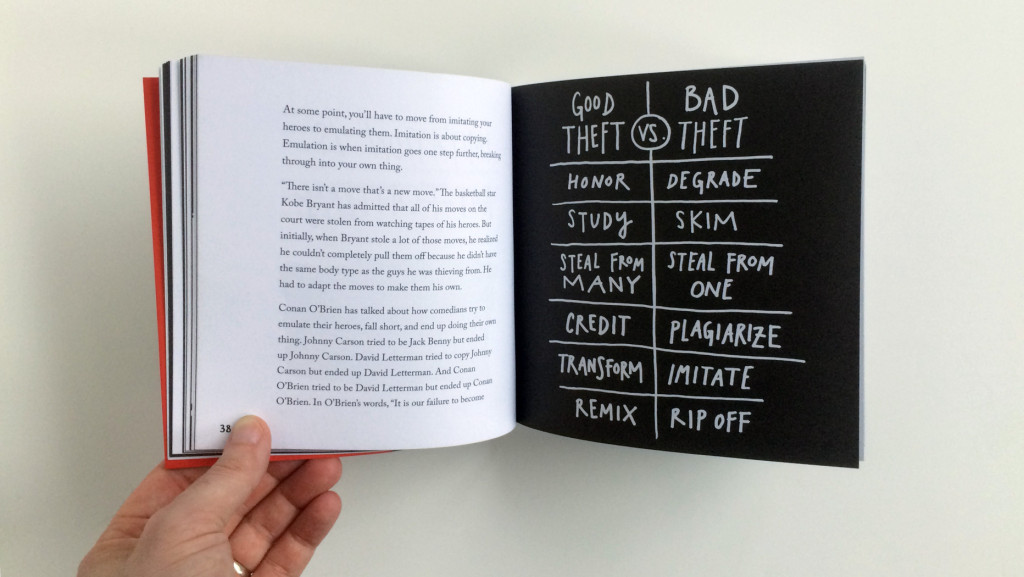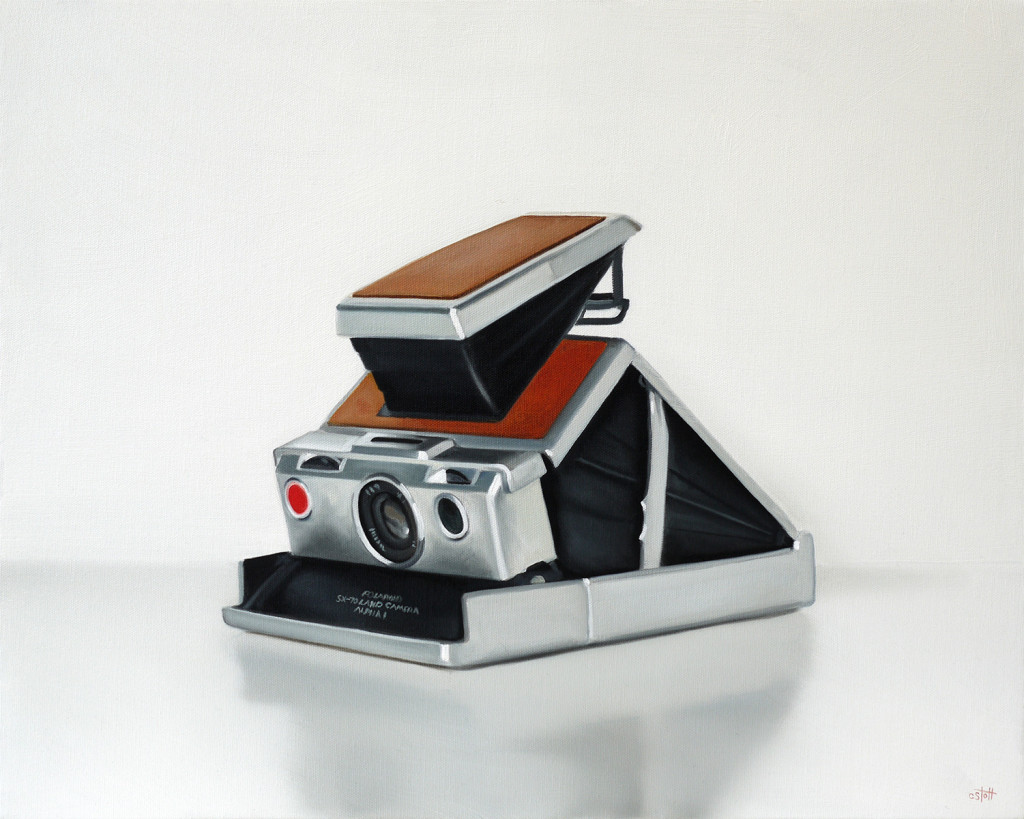
I received this Polaroid SX-70 as a gift — always a great way to come up with an idea for a painting.
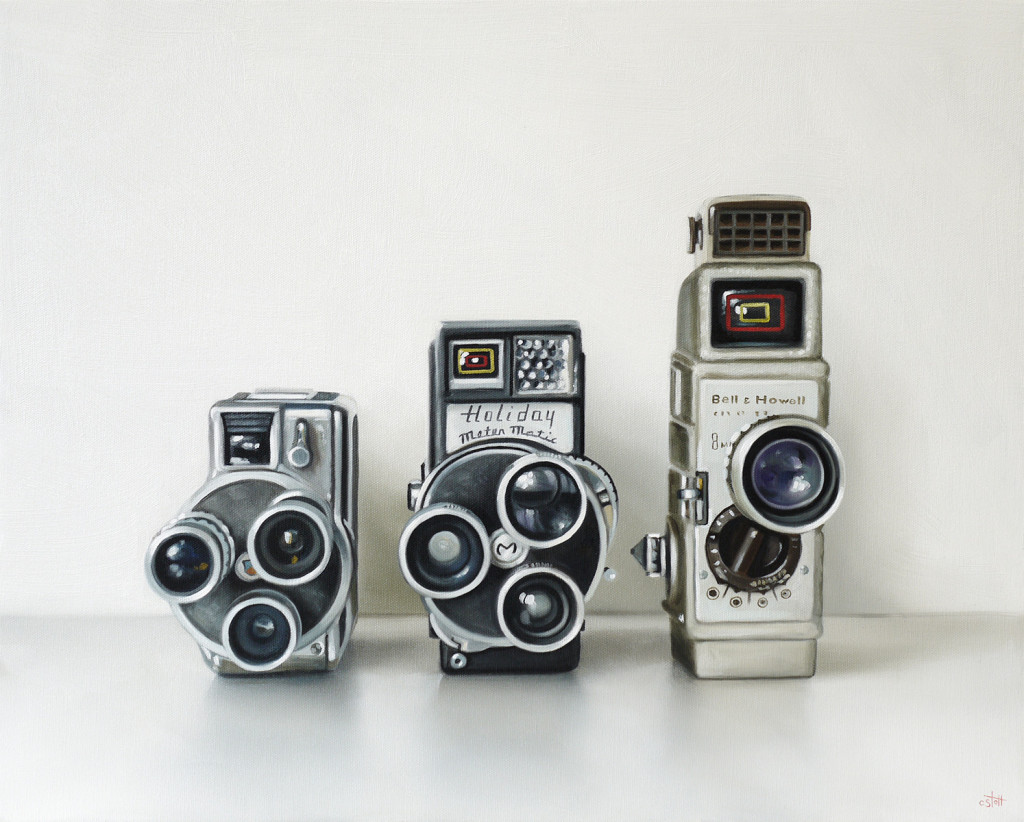
Three 8mm Cameras, from when compact holiday cameras were made of cast iron and weighed 12 pounds.
Sometimes it would seem my paintings are kind of devoid of color, mostly very subdued or even simply black objects on simple white grounds. So I decided to swing the pendulum entirely the other way.
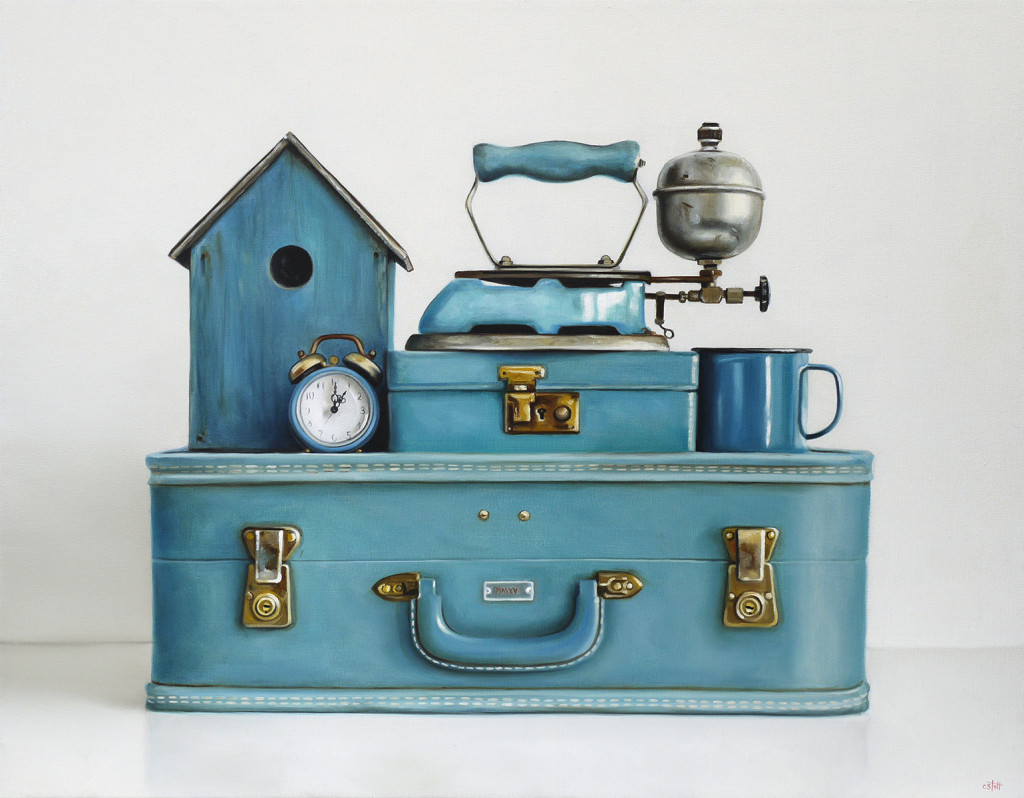
Above we have The Relationship Between Blue and Green. Turquoise. I used all the blues and greens on the palette.
I found myself a fantastic antique and vintage dealership near my new home. They were helpful in entertaining the idea of going through their shop looking for objects of certain colors. A birdhouse, an old clothes iron, a jewellery box, vintage luggage, an enamel cup, and a little alarm clock.
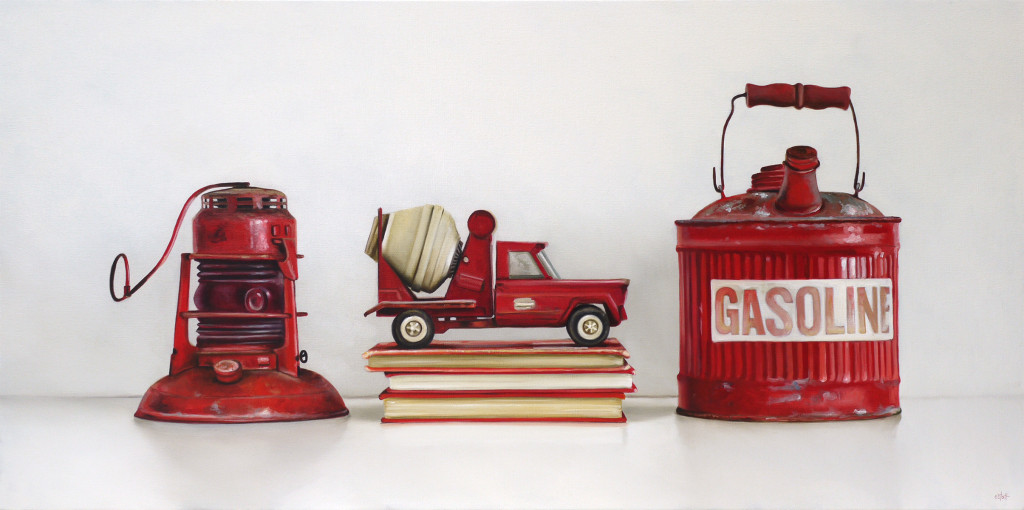
Amber and Andrew at Everything Old are so friendly, so generous and helpful. For the Red painting they helped me find an old traffic warning lantern, a Tonka cement truck and a gasoline can. Makes for a bold, bright vehicle theme.
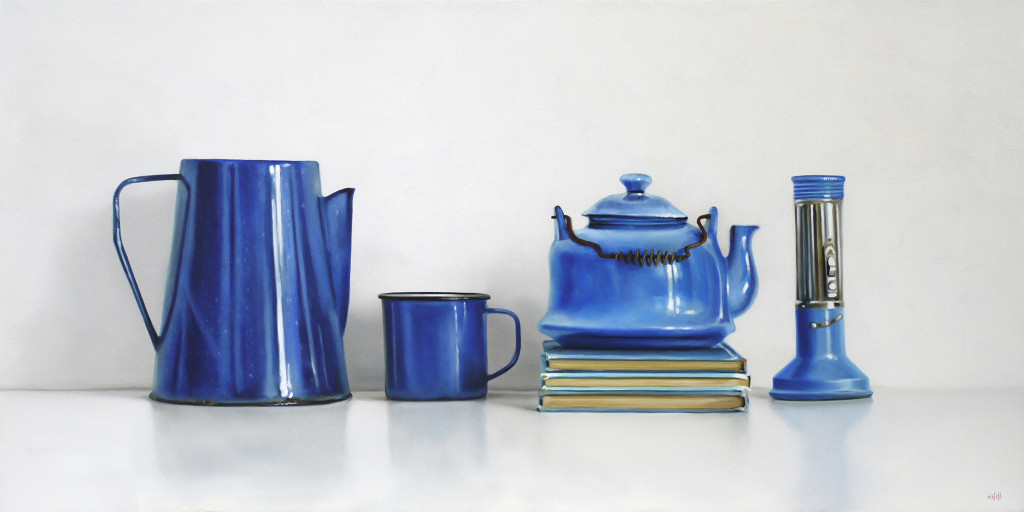
The Blue painting has an enamel coffee pot, tea pot, cup and flashlight. I thought it was interesting the way the paintings each ended up with a theme of sorts, beyond the color focus.

Twenty four vintage alarm clocks depicting all the hours in a day.
This painting has already sold, but there are affordable prints available. The folks at the Elliott Fouts Gallery will answer any questions you have and they ship worldwide.
For years — and I mean years — I have talked about my paintings being about the narrative of the vintage objects I paint.
I’m not so sure that’s it. Or at least, that’s not all they are about. I see the paintings really being about three things. 1) Technique 2) Minimalism 3) Subject
The technique I use, the slow layering of paint, the close attention to detail, it’s such a huge part of the work. I spend a great deal of time looking at realist painting, historic painting and new paintings being made right now. What I see in the technique is a connection to hundreds of years of art making, a connection to hundreds of years of artists.
My compositions are all straight forward and simple. They are minimalist. A philosophy that I strive to apply in all parts of life. When I’m not looking up art on the web, I’m looking up blogs and books about minimalism. In painting, I can quit literally design compositions that depict minimalist philosophy.
And right on top of that minimal composition, the subject sits with its own ideas. Vintage alarm clocks, for example, are all about time. They also have colours and shapes — numerous circles and ellipses, the hands pointing in all directions.
I am finished the twenty paintings for my July show at the Elliott Fouts Gallery. Above are five of the images I shared on Instagram, where you can find me as xmarksthestott.
Over the last year, I moved from the house where my family lived for a decade to a rented home in a new city, then to a new home of our own. Moving a family a couple times in a single year is serious work. It has been months that I worked amongst boxes stacked beside me in studio spaces that have felt temporary and really, really chaotic. Only today did I finally get the last part of my studio set up. I plan on being here for a long time and I wanted it to feel right, to feel like a space where I can easily focus and spend my days.
We had some misadventures over the last year. My wife and I honestly don’t think we would have relocated our family if we were able to peek in to a crystal ball and saw what was before us. But everything works out. We stuck to it. Our kids are happy. We are happy.
So now that we are settling down proper and good in our new home, I’m ready to get a little more ambitious with my painting.
In all the endeavors that we can undertake the options in art are vast. We can choose to make our work using countless techniques and methods and we can find inspiration in everything that is before us. In today’s art world, anything goes.
There are no rules, it would seem. Except one. There is one rule we agree on. In writing, music, film, design, and visual art, plagiarism is the one and only rule that cannot be broken.
When I stumbled upon Chidester’s painting called “Story Time” I was initially confused. It literally made no sense to me, it seemed impossible that I was looking at it.
I have had problems in the past with painting factories taking my images off the web and blatantly making forgeries of my work. In no way is it right for someone to literally re-paint an artist’s work and sell it. I work hard to make a living off my paintings, so when someone does this I cannot help but feel it is theft.
You can read about my painting here.
Chidester contacted me and provided a curious story, saying someone emailed her an image of my painting and she was unaware of the image was a painting.
When my paintings are shown to people on a computer screen they react by initially thinking they are looking at a photograph. It is realism and computer or smartphone screens flatten and miniaturize images. In “real life” my paintings are far more “painterly” than what you see on a tiny screen in the palm of your hand.
However, I am left a little confused as to how Chidester, who has been painting for decades, could work so long from my images and not once come to realize she was looking at a painting. Even “non-painters” eventually understand they are looking at paintings when they look close for a few brief minutes. Another painter will notice the markings of a painting much sooner and with more confidence than anyone else. Especially after looking long enough to be able to exact a composition and arrangement of books and titles. And this is where I clearly realize I’m only getting a fraction of the truth from the person who copied my work.
Did Chidester ask for the copied paintings back? Did she destroy them? Did she explain to the buyer what happened? Was the buyer refunded?
This blog post serves as an example that artists will find important and familiar. If you are doing commission work, research the source material given to you – find out everything you can. You don’t want to stumble into a career-threatening mess.
And if you are copying someone else’s work because you like it and want to learn from it, whatever you do, don’t sell the work as your own. In fact, just keep any copied work in your own portfolio and mark it as practice. Don’t even share it on the web. If you do, you might end up looking like a hack and a thief.
I think it’s a good time to point out Austin Kleon’s book Steal Like an Artist. There are rules at play here, and if you follow them, you’ll be fine.
